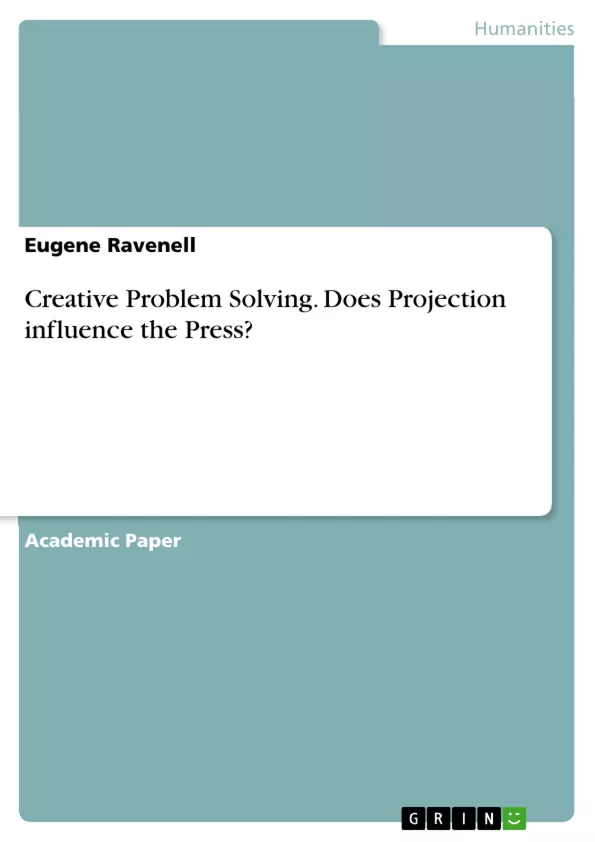What this project aims to achieve is using creative problem tools with the notion that Projection (in relation to circumstances in our environment) causes us to push against our press. Using Projection (mental images), can we find solutions to problems efficiently? Samples of CPS tools and their uses will be explained. "Projection" meaning and inner-works of our brain function will show an illustration that will be clarified as to how individual’s cognitive functions react to stimuluses’. Projection is a simulation of a scene, place, and time. It is reasonable to ask that if, based on our environmental factors like press (environment), attitudes, and emotions, do we Project or recreate mental pictures in our mind that help move us forward whereby we solve problems deliberately to overcome our environment beforehand.
Inhaltsverzeichnis (Table of Contents)
- Abstract
- Acknowledgements
- Dedication
Zielsetzung und Themenschwerpunkte (Objectives and Key Themes)
This project investigates the role of projection in creative problem solving, exploring whether the act of mentally projecting images influences our ability to overcome challenges and pressures in our environment. It aims to demonstrate how projection can be a powerful tool for finding solutions to problems efficiently, particularly by leveraging mental imagery and simulation.
- The relationship between projection and creative problem solving.
- The impact of environmental factors (press) on our ability to project mental images.
- The role of projection in overcoming obstacles and achieving goals.
- The utilization of creative problem-solving tools (CPS tools) in facilitating projection.
- The cognitive and emotional aspects of projection, including prospection, theory of mind, and navigation.
Zusammenfassung der Kapitel (Chapter Summaries)
- Abstract: This chapter introduces the project's aim to explore the relationship between projection and creative problem solving, arguing that projection can help us overcome challenges by creating mental images and simulations of solutions. It highlights the use of CPS tools and how projection functions within our cognitive processes.
- Acknowledgements: This chapter expresses gratitude to the author's wife, faculty at Buffalo State College, and his children for their support and influence in his journey towards achieving a master's degree in creativity.
- Dedication: This chapter dedicates the project to the author's wife and children, acknowledging their significant role in his pursuit of higher education.
Schlüsselwörter (Keywords)
The central keywords and focus topics of this project include projection, press, prospection, visionary thinking, visionization, and creative problem solving. These terms encapsulate the core concepts explored in the text, highlighting the relationship between mental imagery, environmental challenges, and finding creative solutions.
- Arbeit zitieren
- Eugene Ravenell (Autor:in), 2017, Creative Problem Solving. Does Projection influence the Press?, München, GRIN Verlag, https://www.grin.com/document/429329



